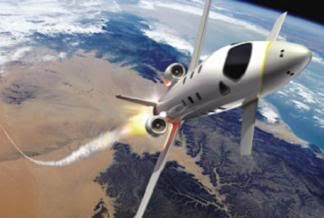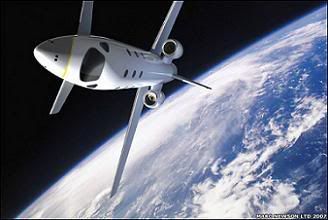Post by glactus on Mar 21, 2008 6:53:27 GMT

Europe's leading spacecraft manufacturer EADS Astrium, the builders of the Ariane rocket (that launches many of Europe's space missions), has announced plans to mass produce the next generation of space planes. Developing the design of a single-stage "rocket plane", the company believes there will be a demand for 10 spacecraft per year when the space tourism idea "takes off".

Astrium won't be running tourist trips themselves; they will simply supply the hardware to space tourism companies predicting the industry will progress along the same lines of a classical aeronautical business model.
Astrium has big plans. As space tourism companies begin to emerge, like Richard Branson's Virgin Galactic, the technology capable of taking tourists above 100 km into the threshold of space is developing at an accelerated rate.
At first glance, the new Astrium concept looks just like a conventional jet, but this aircraft is different. For the first part of the journey high into Earth's atmosphere, the spacecraft uses conventional jets (that require oxygen to function).
At about 12 km, the jets will be rendered useless as atmospheric oxygen begins to thin out. At this point rocket engines, supplied by onboard tanks of oxygen and methane, will rumble into operation blasting the craft vertically into space at high velocity. The spacecraft will have covered 60 km in 80 seconds and will have enough momentum to continue into space, breaching the 100 km "lower limit" of space.
Astrium forecasts a healthy market for their space planes, and although it won't be in the same league as Boeing or Airbus, it will be a big step for space tourism.

credits:
Original source: BBC, filed under: Space Flight, Space Tourism
This is part text only. See image, full text and all scientists involved at universetoday.com
www.universetoday.com/2008/03/18/big-plans-for-mass-production-of-advanced-spacecraft-for-tourists-video-simulation-pictures/#more-13232
spacecraft flight image:
blog.wired.com/underwire/images/2007/06/22/webimg_image2.jpeg
Spaceship image:
www.universetoday.com/wp-content/uploads/2008/03/4.jpg
article credit: Ian O'neill


